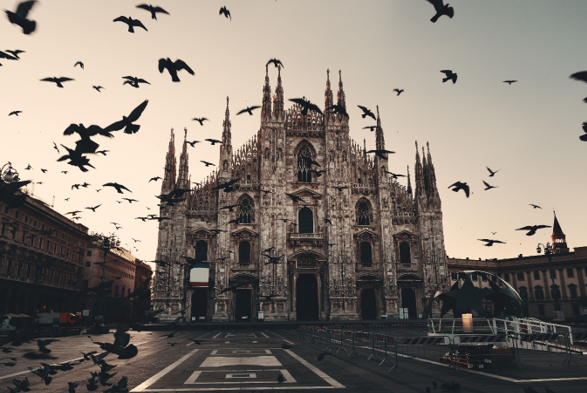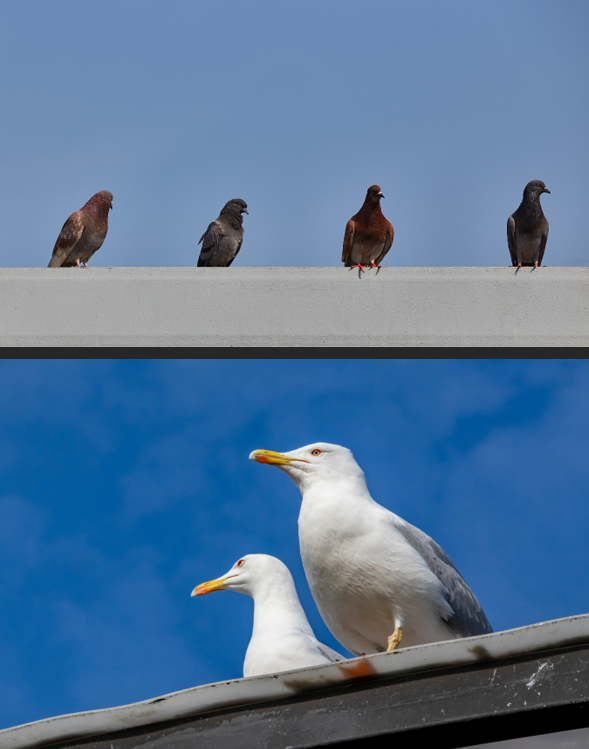Dropping knowledge on a delicate issue
 All of us have seen a fine building unhelpfully adorned with pigeon food in its (ahem) processed form. Perhaps we assume this is an issue of unsightliness and nothing more, but bird droppings create a host of problems from disease to corrosion and more, especially for heritage buildings.
All of us have seen a fine building unhelpfully adorned with pigeon food in its (ahem) processed form. Perhaps we assume this is an issue of unsightliness and nothing more, but bird droppings create a host of problems from disease to corrosion and more, especially for heritage buildings.
The culprits
Generally, the precursor step to any cleaning is to remove existing nests, so the problem doesn’t instantly recur.
In Great Britain, any removal of bird nests (or killing of birds) must comply with the Wildlife and Countryside Act 1981. Northern Ireland has its own rules. Otherwise, the one act is regulated by different bodies, and supplemented by different additional laws, across the home nations.
Most of the damage to our buildings is due to two species - common pigeons (Columba livia) and seagulls (more formally European herring gulls, or Larus argentatus). The 1981 law categorised these birds as pest species, and there are still online resources telling you that you can remove nests under the act’s “general license”, but this information is outdated. As the British Pest Control Association says, “Herring gull and lesser black-backed gull have been excluded from the general licences issued by Defra in June 2019 because of concerns about their conservation status”[i]. You also, of course, need to ascertain accurately which species are involved in your problem. So the advice is to seek an expert partner whose business it is to keep up to date with the law.
Acid drops
Birds don’t produce urine. Instead, they deposit concentrated uric acid in droppings (that’s why the colour is white). The acid can continue to erode stone and metal well after anything visible is removed, though this can depend on the cleaning materials used. Softer stones like limestone and sandstone are especially vulnerable.
Once cracks begin to form, there is also the “burst pipe” effect: water seeps in, and then expands as it approaches the freezing point. For this same reason, professional remediation providers will generally try to limit the amount of water used when dealing with the more porous building materials.
We might think of iron and steel as virtually the definition of strength, but they are reactive with acids. Also, guano reduces to salt and ammonia, chemicals which speed rusting. With stone, especially porous stone, those salts are absorbed and they recrystallise, which again causes internal pressure.
 As if bird flu wasn’t enough
As if bird flu wasn’t enough
Pigeon droppings are associated with dozens of diseases too, though most are not transmissible to humans. Infections we can suffer include cryptococcosis, histoplasmosis and psittacosis. The first of these is a potentially fatal fungal infection of the lungs and brain, presenting as a pneumonia and/or a meningitis, depending on where the infection reaches. Cross-species transmission is rare, thankfully.
In some people, guano can also trigger allergic reactions, especially asthma and an allergen reaction called Bird fancier's lung.
Other problems associated with birds include physical damage to buildings as the animals peck for moss and algae, drains and ventilation systems becoming blocked with nesting material, as well as noise and odours. Guano attracts insects as well as being an attractant to more birds.
How to deal with guano
Professional cleaning starts with an extensive planning and documentation phase, including analysis of legal obligation. Also, note that one of the greatest risks associated with guano is inhalation of dust during removal.
Methods used for cleaning vary greatly depending on the material involved but, typically, waste is neutralised by treating it with an avicide, and then dampened for easier removal. Professional teams working at the sharp end will use protective clothing including latex gloves and particle filters.
Abrasive methods such as sandblasting may be considered, but great care needs to be taken here, as these approaches may cause more damage than the problem you are remediating. Some harder materials, however, withstand such assault well.
Once cleaning is complete, consider deterrent methods such as anti-roosting spikes, pigeon wire, or treatment of surfaces with bird repellent gel.
For more information, please consult a specialist.
















